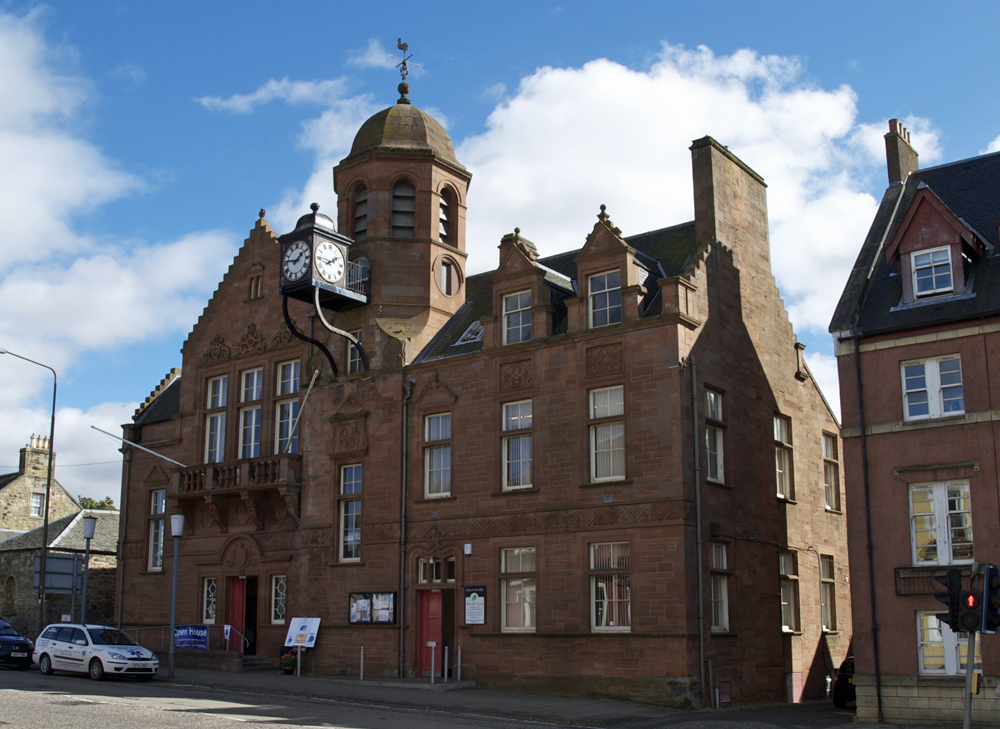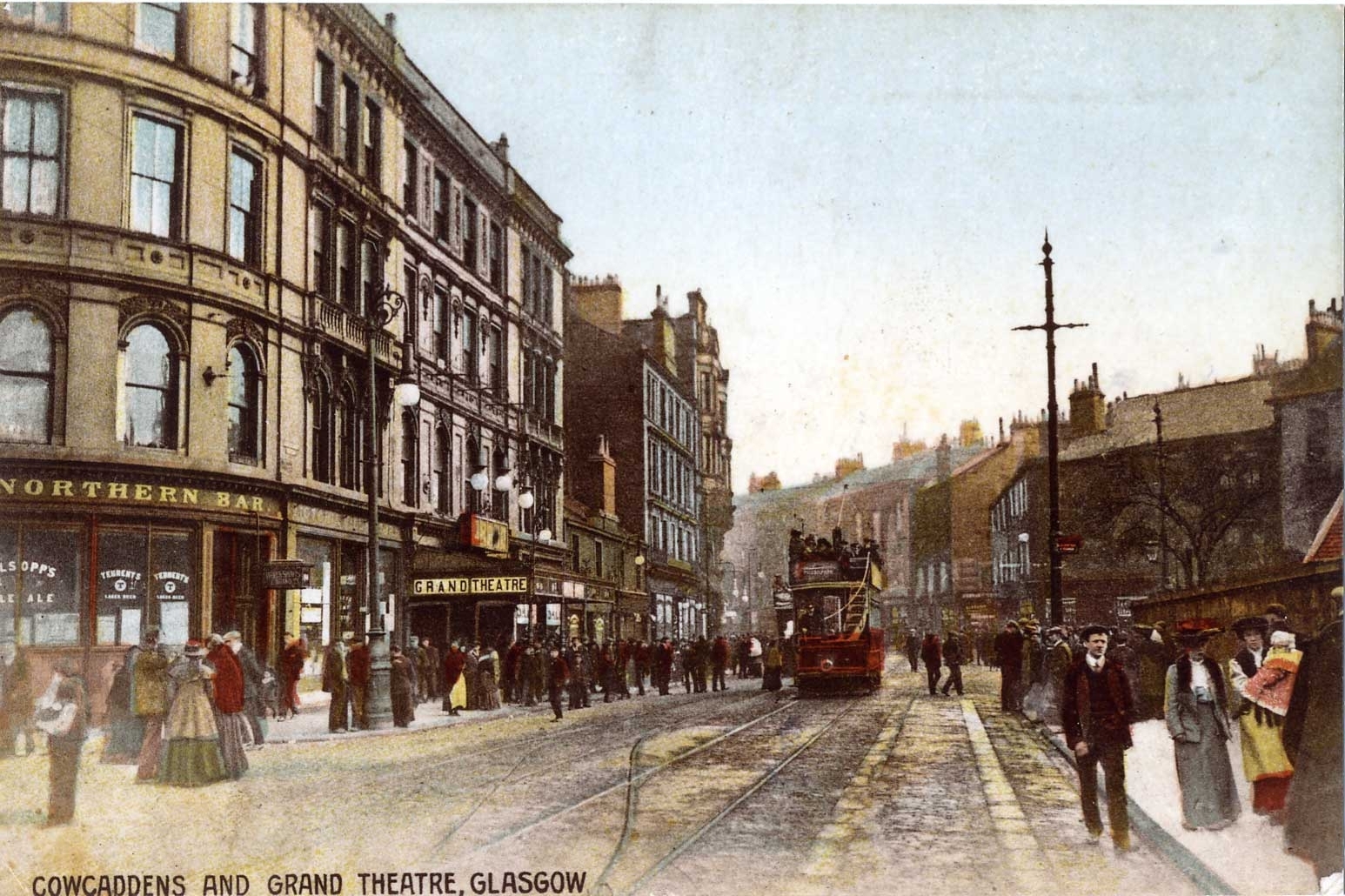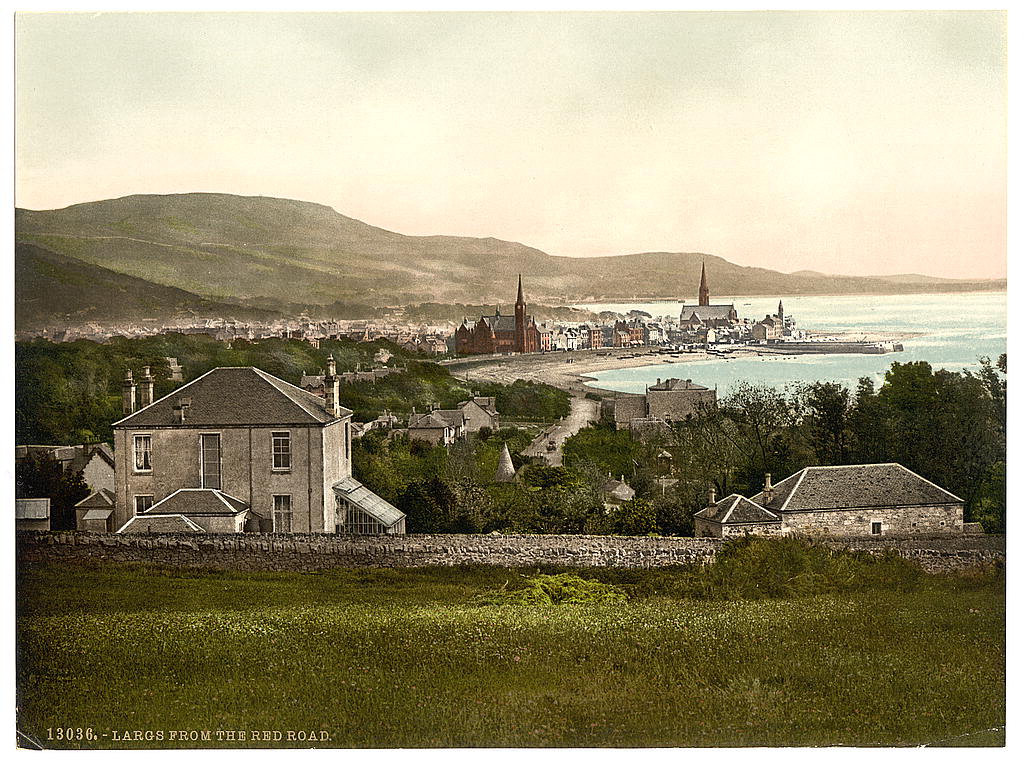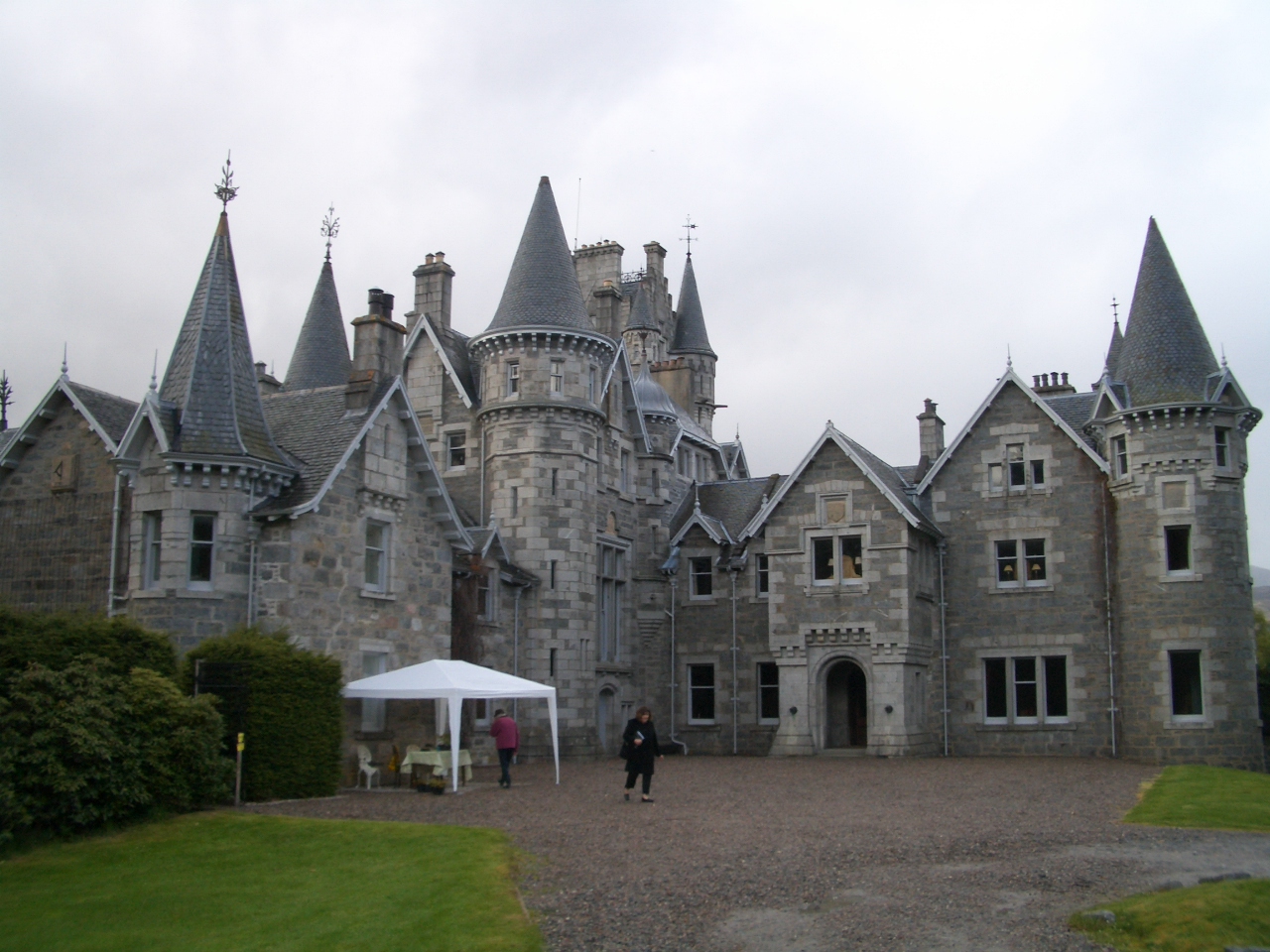|
Campbell Douglas
Archibald Campbell Douglas (usually simply referred to as Campbell Douglas) (14 June 1828 – 14 April 1910) was a Scottish architect based primarily in Glasgow. He designed many churches in Glasgow and Edinburgh, especially those for the Free Church of Scotland. He was three times President of the Glasgow Architectural Association and in 1891 was the Vice President of the Royal Institute of British Architects. He was active in politics, and was a member of the Scottish Liberal Club, Glasgow Liberal Club and National Liberal Club (in London). He was also a Justice of the Peace in Argyllshire.Dictionary of Scottish Architects: Campbell Douglas Early life Douglas was born at Kilbarchan in 1828, the son of Janet Monteath and the Rev. Robert Douglas, minister in the parish of Kilbarchan in Renfrewshire. He attended the University of Glasgow at the age of 13. In 1842, he was articled to John Thomas Rochead, architect, who was based in Glasgow. In 1843, together with his fat ... [...More Info...] [...Related Items...] OR: [Wikipedia] [Google] [Baidu] |
Kilbarchan
Kilbarchan ( gd, Cill Bhearchain) is a village and civil parish in central Renfrewshire, in the west central Lowlands of Scotland. The village's name means "cell (chapel) of St. Barchan". It is known for its former weaving industry. History The village was once one of many weaving villages, and at one time there were 800 handlooms in the village. The weavers were active in the Radical movement which sought parliamentary reform, and Kilbarchan played a part in the agitation of the so-called Radical War of 1820. One cottage named the "Weavers Cottage" built in 1723 has been conserved by the National Trust for Scotland with weaving still in operation, and guides demonstrate handloom weaving to visitors. Kilbarchan was the birthplace of Mary Barbour, the Scottish political activist who led the Glasgow rent strike of 1915 and later became Glasgow's first woman councillor. Lilias Day The main annual event in the village calendar is the celebration of Lilias Day, on the fi ... [...More Info...] [...Related Items...] OR: [Wikipedia] [Google] [Baidu] |
Charles Alfred Chastel De Boinville
Charles Alfred Chastel de Boinville (1849 – April 25, 1897) was an Anglo-French architect, who worked in Japan and Britain. His father was a well known clergyman who completed 30 years of missionary service in France, and left several publications on his life such as Thomas Constable's Memoir. Early life His ancestor prospered during the ancien régime in Lorraine, and owned estate named Boinville. His great-grandfather, Jean Baptiste Chastel de Boinville, became much associated with Lafayette in political matters, and served as aide-de-camp under him. When the French Revolution broke out, and the King and Queen were brought from Versailles to Paris, they were escorted by Lafayette, who rode on one side of the carriage, and by De Boinville on the other. Like many other noble unfortunates, Jean Baptiste's estates were confiscated by the Revolutionary Government. He escaped to Britain where he met a wealthy supporter of French emigres, John Collins, a sugar planter in St. Vin ... [...More Info...] [...Related Items...] OR: [Wikipedia] [Google] [Baidu] |
Cowcaddens, Glasgow
Cowcaddens ( sco, Coucaddens, gd, Coille Challtainn) is an area of the city of , . It is very close to the city centre and is bordered by the newer area of to the south-west and old to the east. Cowcaddens was ... [...More Info...] [...Related Items...] OR: [Wikipedia] [Google] [Baidu] |
Cupar, Fife
Cupar ( ; gd, Cùbar) is a town, former royal burgh and parish in Fife, Scotland. It lies between Dundee and Glenrothes. According to a 2011 population estimate, Cupar had a population around 9,000, making it the ninth-largest settlement in Fife, and the civil parish a population of 11,183 (in 2011).Census of Scotland 2011, Table KS101SC – Usually Resident Population, publ. by National Records of Scotland. Web site http://www.scotlandscensus.gov.uk/ retrieved March 2016. See "Standard Outputs", Table KS101SC, Area type: Civil Parish 1930 It is the historic county town of Fife, although the council now sits at Glenrothes. History The town is believed to have grown around the site of Cupar Castle, which was the seat of the sheriff and was owned by the earls of Fife. The area became a centre for judiciary as the county of Fife and as a market town catering for both cattle and sheep. Towards the latter stages of the 13th century, the burgh became the site of an assembly of the ... [...More Info...] [...Related Items...] OR: [Wikipedia] [Google] [Baidu] |
United Presbyterian Church (Scotland)
The United Presbyterian Church (1847–1900) was a Scottish Presbyterian denomination. It was formed in 1847 by the union of the United Secession Church and the Relief Church, and in 1900 merged with the Free Church of Scotland to form the United Free Church of Scotland, which in turn united with the Church of Scotland in 1929. For most of its existence the United Presbyterian Church was the third largest Presbyterian Church in Scotland, and stood on the liberal wing of Scots Presbyterianism. The Church's name was often abbreviated to the initials U.P. United Secession Church It was founded in 1820 by a union of various churches which had seceded from the established Church of Scotland. The First Secession had been in 1732, and the resultant "Associate Presbytery" grew to include 45 congregations. A series of disputes, in 1747 over the burgesses oath, and in the late 18th century over the Westminster confession, led to further splits, but in 1820 two of the groups united to ... [...More Info...] [...Related Items...] OR: [Wikipedia] [Google] [Baidu] |
Largs
Largs ( gd, An Leargaidh Ghallda) is a town on the Firth of Clyde in North Ayrshire, Scotland, about from Glasgow. The original name means "the slopes" (''An Leargaidh'') in Scottish Gaelic. A popular seaside resort with a pier, the town markets itself on its historic links with the Vikings and an annual festival is held each year in early September. In 1263 it was the site of the Battle of Largs between the Norwegian and the Scottish armies. The National Mòd has also been held here in the past. History There is evidence of human activity in the vicinity of Largs which can be dated to the Neolithic era. The Haylie Chambered Tomb in Douglas Park dates from c. 3000 BC. Largs evolved from the estates of North Cunninghame over which the Montgomeries of Skelmorlie became temporal lords in the seventeenth century. Sir Robert Montgomerie built Skelmorlie Aisle in the ancient kirk of Largs in 1636 as a family mausoleum. Today the monument is all that remains of the old kirk. ... [...More Info...] [...Related Items...] OR: [Wikipedia] [Google] [Baidu] |
Kirkcaldy
Kirkcaldy ( ; sco, Kirkcaldy; gd, Cair Chaladain) is a town and former royal burgh in Fife, on the east coast of Scotland. It is about north of Edinburgh and south-southwest of Dundee. The town had a recorded population of 49,460 in 2011, making it Fife's second-largest settlement and the 12th most populous settlement in Scotland. Kirkcaldy has long been nicknamed the Lang Toun (; Scots for "long town") in reference to the early town's main street, as indicated on maps from the 16th and 17th centuries. The street would finally reach a length of nearly , connecting the burgh to the neighbouring settlements of Linktown, Pathhead, Sinclairtown and Gallatown, which became part of the town in 1876. The formerly separate burgh of Dysart was also later absorbed into Kirkcaldy in 1930 under an act of Parliament. The area around Kirkcaldy has been inhabited since the Bronze Age. The first document to refer to the town is from 1075, when Malcolm III granted the settlemen ... [...More Info...] [...Related Items...] OR: [Wikipedia] [Google] [Baidu] |
Alloway
Alloway ( gd, Allmhaigh, ) is a village in South Ayrshire, Scotland, located on the River Doon. It is best known as the birthplace of Robert Burns and the setting for his poem "Tam o' Shanter". Tobias Bachope, the mason responsible for the construction of Hopetoun House, Craigiehall, and Kinross House, also hailed from Alloway. Some historic parts of the village make up a conservation area. The village and surrounding areas were incorporated into the Royal Burgh of Ayr in 1935, and the extended village is now a suburb of Ayr. Robert Burns The birthplace of Robert Burns, known as "Burns Cottage", is located in Alloway, now adjacent to a museum containing original manuscripts of his poetry. A nineteenth century memorial to Burns, designed by Thomas Hamilton, is located at the foot of the village next to the present church. The nearby, ruined Alloway Auld Kirk and the Brig o' Doon are featured in the poem '' Tam o' Shanter'', and are presently tourist attractions. Burns's fat ... [...More Info...] [...Related Items...] OR: [Wikipedia] [Google] [Baidu] |
Ayrshire
Ayrshire ( gd, Siorrachd Inbhir Àir, ) is a historic county and registration county in south-west Scotland, located on the shores of the Firth of Clyde. Its principal towns include Ayr, Kilmarnock and Irvine and it borders the counties of Renfrewshire and Lanarkshire to the north-east, Dumfriesshire to the south-east, and Kirkcudbrightshire and Wigtownshire to the south. Like many other counties of Scotland it currently has no administrative function, instead being sub-divided into the council areas of North Ayrshire, South Ayrshire and East Ayrshire. It has a population of approximately 366,800. The electoral and valuation area named Ayrshire covers the three council areas of South Ayrshire, East Ayrshire and North Ayrshire, therefore including the Isle of Arran, Great Cumbrae and Little Cumbrae. These three islands are part of the historic County of Bute and are sometimes included when the term ''Ayrshire'' is applied to the region. The same area is known as ''Ayr ... [...More Info...] [...Related Items...] OR: [Wikipedia] [Google] [Baidu] |
John Rhind (architect)
John Rhind (10 March 1836 – 10 August 1889) was an architect from Inverness, Scotland. Biography John Rhind was born in Banffshire in 1836, son of the Inverness architect builder George Rhind and his wife Isabella Milne. He was probably initially articled to his father, but around 1854 he went to Glasgow, where he became an assistant to Campbell Douglas, remaining with him during the early years of his partnership with J. J. Stevenson. At Douglas' he became acquainted with Bruce James Talbert and took an interest in the work of Alexander 'Greek' Thomson whose influence was later to be reflected in Rhind's Imperial Hotel and Union Street buildings, both in Inverness. While in Glasgow he is said to have been a Vice-President of the Young Architectural Association of Glasgow, perhaps a junior branch of the Glasgow Architectural Society. Around 1863 Rhind returned to Inverness and took over the architectural side of his father's business. His Glasgow experience, and bold if una ... [...More Info...] [...Related Items...] OR: [Wikipedia] [Google] [Baidu] |
Penicuik Town Hall
Penicuik Town Hall, formerly the Cowan Institute, is a municipal building in the High Street, Penicuik, Midlothian, Scotland. The structure, which was the meeting place of Penicuik Burgh Council, is a Category C listed building. History The building was the initiative of the owner of the local papermaking business at Valleyfield Mills, Alexander Cowan, who left money for the purpose of establishing an institution for the "recreation and instruction" of the local community. Although Cowan had died in 1859, it was not until the early 1890s that his son, Charles Cowan, who was the local Member of Parliament (United Kingdom), Member of Parliament, invited his niece's husband, Campbell Douglas, an established architect, to prepare a plans for the building. The site they chose for the new building was occupied by a row of domestic properties. The new building was designed in the Renaissance Revival architecture, Renaissance Revival style, built in red sandstone at a cost of £5,000 an ... [...More Info...] [...Related Items...] OR: [Wikipedia] [Google] [Baidu] |
Alexander Cowan
Alexander Cowan (17 June 1775 – 13 February 1859) was a Scottish papermaker and philanthropist. He was a cousin and friend of Thomas Chalmers, the prominent Scottish minister. Through his business he was a friend and associate of the publisher Archibald Constable and, through Constable, an associate of Sir Walter Scott. Cowan owned and ran the huge Valleyfield paper-works in Penicuik in Midlothian. Life Cowan was born at Valleyfield on the edge of Penicuik on the banks of the North Esk. He studied physics and chemistry in Edinburgh, and decided to improve the process of paper-making, setting up what was then one of the world's largest mills, which operated for 150 years. He married Elizabeth Hall, daughter of George Hall, a merchant in Crail, in Fife, in 1800. The couple had several sons, all involved in the family business. Their first child, Charles, was born in 1801 at their house at 12 Charlotte Street, the first of Cowan's eleven children, eight of whom survived to a ... [...More Info...] [...Related Items...] OR: [Wikipedia] [Google] [Baidu] |










.jpg)